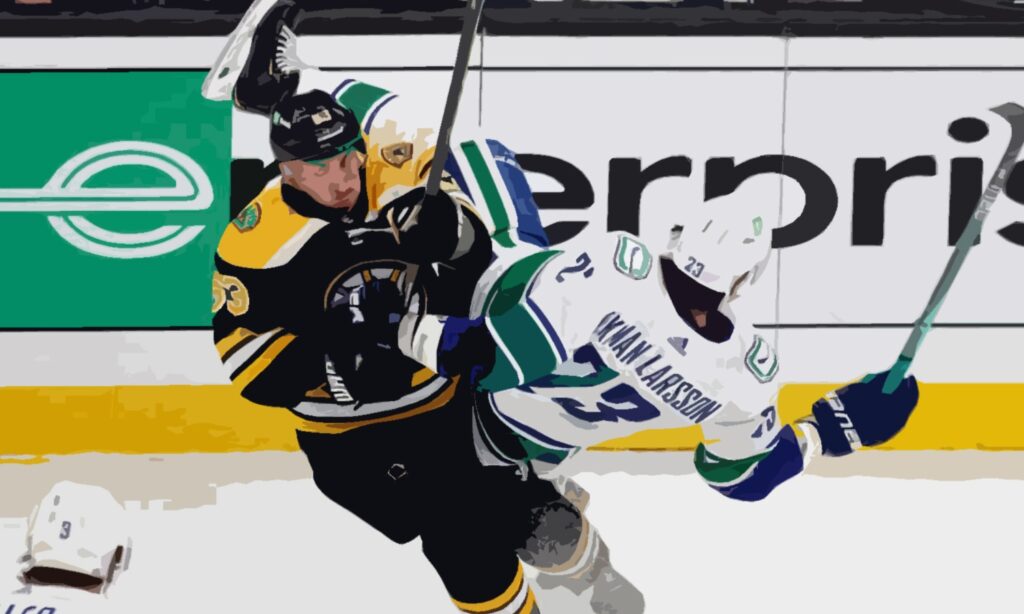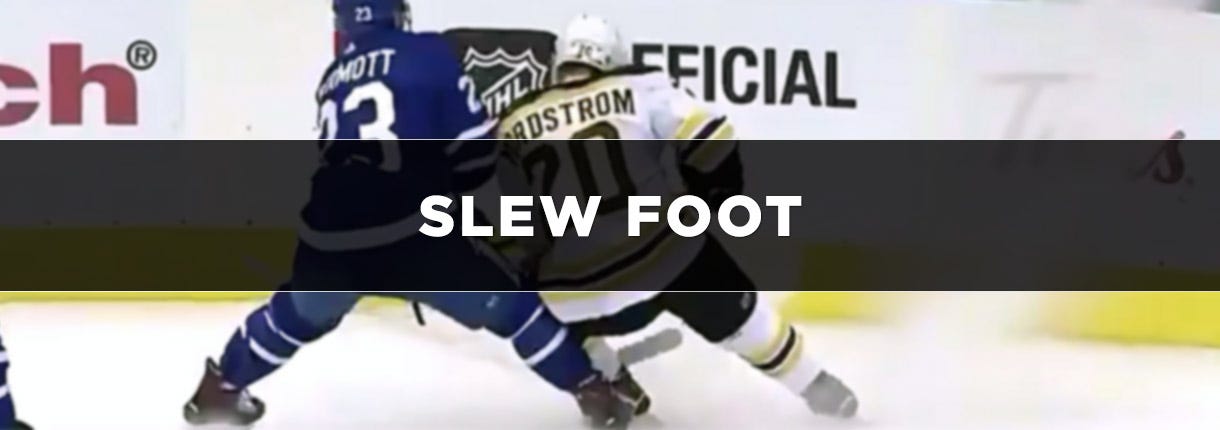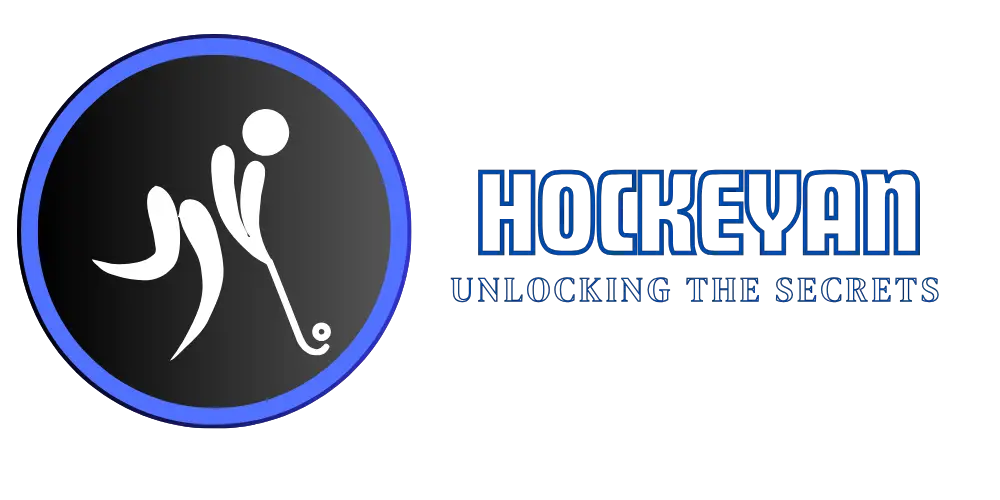Slew foot hockey is a controversial move. It can lead to serious injuries.
In the fast-paced world of hockey, players constantly seek ways to gain an edge. Unfortunately, some tactics can be dangerous and frowned upon. One of these is the slew foot maneuver. This move involves using the legs or feet to trip an opponent, often causing them to fall backward.
It’s considered unsportsmanlike and can lead to penalties. Understanding the impact of slew foot hockey is crucial for players, coaches, and fans. It highlights the importance of fair play and the need for strict enforcement of rules. In this blog post, we will delve into the specifics of slew foot hockey, its consequences, and why it’s essential to maintain integrity in the sport.
Slew Foot Hockey Basics
Understanding the basics of Slew Foot Hockey is crucial for any hockey enthusiast. This term often emerges in discussions about fouls and penalties. Knowing its definition and history helps players and fans alike.
Definition
Slew foot hockey refers to a specific type of foul play. In this move, a player uses their leg to trip or kick an opponent’s legs from behind. This causes the opponent to fall backward. It is considered dangerous and can lead to serious injuries.
Historical Background
The term “slew foot” has been part of hockey for many decades. It likely originated in the early days of the sport. Players used this move to gain an unfair advantage. Over time, officials recognized its potential for harm. They began to penalize it more strictly.
Today, a slew foot is one of the most frowned-upon actions in hockey. It can result in penalties, fines, and suspensions. Understanding its history helps in appreciating the strict rules against it.

Credit: www.youtube.com
Mechanics Of The Slew Foot
The slew foot is a controversial move in hockey. It involves tripping an opponent using the legs. This can lead to serious injuries and penalties. Understanding the mechanics helps in both avoiding and identifying it. Let’s dive into the key elements of this move.
Body Positioning
Body positioning is crucial in a slew foot. Players must be close to their opponent. The upper body stays upright while the lower body makes the move. Keeping balance is important. A slight misstep can lead to a fall.
Leg Movement
Leg movement is the heart of the slew foot. The player uses one leg to push against the opponent’s skate. The other leg sweeps the opponent’s legs from behind. This motion is quick and often unexpected. Proper execution can take down even the most agile player.
Situations To Use Slew Foot
Slew foot hockey is a controversial move that can be both a strategic asset and a risky gamble. Understanding when to use it can make all the difference between a game-winning play and a penalty. This section explores the specific situations where a slew foot might come into play.
Defensive Strategy
In high-pressure defensive scenarios, a slew foot can disrupt an opponent’s momentum. Imagine you’re facing an aggressive player charging towards your net. A well-timed slew foot can take them off balance, giving you a chance to regain control of the puck.
However, use caution. Referees closely watch for this move. Misjudging the timing could lead to a penalty, putting your team at a disadvantage. Practice in controlled environments to master the timing.
Offensive Play
On the offensive side, a slew foot can create unexpected opportunities. Think about a tight game where every second counts. Executing a slew foot can destabilize a defender, opening up a path to the goal.
But remember, overuse or misuse can backfire. Opponents will quickly adapt if they see you using this move frequently. Use it sparingly to maintain the element of surprise.
Have you ever seen a player change the course of a game with a single move? The slew foot is exactly that kind of tactic. When used correctly, it can be a game-changer. But it requires precision and perfect timing.
What are your thoughts on the slew foot? Have you tried it in your games? Share your experiences and tips in the comments below!

Credit: www.gaimday.com
Controversy Surrounding Slew Foot
Slew foot in hockey sparks heated debates. Players consider it a dangerous move leading to potential injuries. This controversial tactic often results in penalties and suspensions.
The Controversy Surrounding Slew Foot in hockey has sparked passionate debates among fans, players, and officials. Slew foot, a term referring to tripping an opponent by using one’s leg to take their feet out from under them, is a dangerous play. This topic often raises questions about ethics, safety, and the integrity of the game.Ethical Concerns
Slew footing challenges the ethical principles of sportsmanship. It is often viewed as a dirty play, endangering fellow players. You might wonder: why would any player risk their reputation with such tactics? It’s usually out of frustration or a desire to gain an unfair advantage. However, this approach can lead to serious injuries, which no one wants to see. Players and coaches often talk about the importance of fair play. When someone resorts to slew footing, it undermines that spirit, creating mistrust on the ice.League Regulations
Different leagues have various rules to address slew footing. The NHL, for instance, imposes strict penalties on players caught in the act. A minor penalty might be given for a first offense, but repeat offenders face harsher consequences like suspensions. This shows the league’s commitment to player safety. However, the effectiveness of these regulations is often questioned. Are they enough to deter players? Some argue for even stricter punishments to ensure the safety and integrity of the game. Have you ever seen a player get away with a slew foot during a game? It’s frustrating, right? Tightening regulations could help address these concerns and make the sport safer for everyone involved. Incorporating more video reviews or harsher suspensions might be the way forward. Your opinion matters in these discussions, and engaging with the community can drive positive change.Risks And Dangers
Slew foot hockey is a dangerous and unsportsmanlike tactic used by players. This maneuver can lead to serious consequences. It’s important to understand the risks and dangers associated with this act.
Player Injuries
Slew footing often results in severe injuries. The victim usually falls backward. This can cause head injuries, concussions, or broken bones. The sudden fall can lead to serious harm. Players may suffer long-term damage.
Penalties And Suspensions
Referees take slew footing seriously. They impose harsh penalties on offenders. Players guilty of slew footing face suspensions. These suspensions can last several games. Teams may also face fines. This discourages players from using this dangerous move.
Training Techniques
Slew foot hockey training focuses on balance and agility. Players improve their skills through specific drills and exercises. These techniques help in enhancing stability and quick movements on the ice.
Training Techniques Training for Slew Foot Hockey is essential if you want to sharpen your skills and improve your game. Whether you’re a newbie or a seasoned player, refining your moves can lead to significant improvements. You need to adopt effective training techniques to up your game and be prepared for different scenarios on the ice.Drills And Exercises
Drills and exercises are the bread and butter of any good training regimen. They help you master the basics and build muscle memory. Start with simple puck-handling drills. Practice moving the puck around obstacles to improve your control and agility. This will help you maneuver around opponents during a game. Next, work on your shooting. Set up targets in the goal and practice hitting them consistently. This not only boosts your accuracy but also your confidence. Don’t forget about skating drills. Focus on your speed and stability by practicing quick sprints and sharp turns. Good skating is crucial for both offense and defense. To mix things up, try incorporating strength and conditioning exercises. Building up your core and leg muscles will give you the endurance you need for those high-intensity moments.Practice Scenarios
Practicing real-game scenarios prepares you for the unpredictability of an actual match. It helps you think on your feet and make quick decisions. Set up scrimmages with your team. Scrimmages simulate a real game environment and help you practice your strategies in real-time. It’s a great way to identify areas where you need improvement. Try specific scenarios like power plays and penalty kills. These situations can be game-changers, so it’s vital to be prepared. You’ll learn how to capitalize on opportunities and defend against threats. Work on your communication with your teammates. Clear and quick communication can make or break a game. Practice calling out plays and signals to ensure everyone is on the same page. Have you ever found yourself stuck in a tight spot during a game? Practice breakaway scenarios to build your confidence. The more you practice, the more natural it will feel when it happens in a real game. What training techniques do you find most challenging? How do you overcome them? Share your thoughts and tips in the comments below. Your insights might just help another player level up their game. Training isn’t just about hard work; it’s about smart work. By focusing on drills, exercises, and practice scenarios, you can enhance your skills and enjoy the game even more. Happy training!Slew Foot In Professional Hockey
Slew footing is one of the most dangerous moves in hockey. It involves a player using their leg to knock an opponent’s legs out from under them, causing them to fall backwards. This action can lead to serious injuries and is strictly against the rules. Yet, it still occurs in professional games, often with significant consequences.
Famous Incidents
One of the most infamous slew foot incidents happened in 2011 when Brad Marchand of the Boston Bruins tripped Matt Niskanen of the Pittsburgh Penguins. The incident sparked outrage among fans and players alike, leading to Marchand being fined and suspended.
Another notable case involved P.K. Subban and Mark Stone in a 2019 game between the New Jersey Devils and the Ottawa Senators. Subban’s move was widely criticized, and he received a fine from the NHL. These incidents highlight the ongoing issue of slew footing in professional hockey and its potential to cause harm.
Player Opinions
Many players have voiced their opinions about slew footing. Some, like Sidney Crosby, have called for harsher penalties to deter players from using such dangerous tactics. Crosby has stated that player safety should always come first.
On the other hand, some players argue that accidents happen and that not every slew foot is intentional. They believe that context should be considered before handing out penalties. This debate continues to be a hot topic in the hockey community.
What do you think? Should the NHL enforce stricter penalties for slew footing or focus on educating players about safer play? Your opinion matters in shaping the future of the sport.
Alternatives To Slew Foot
Many hockey players and coaches seek alternatives to the dangerous slew foot maneuver. Slew foot, where a player uses their leg to trip an opponent from behind, can lead to serious injuries. Instead, players should focus on safe and effective techniques that maintain the integrity of the game.
Safer Moves
Body checking is a safer alternative to slew foot. It allows players to use their bodies to disrupt opponents without causing harm. Proper body checking uses shoulder contact, which is less likely to result in injury.
Stick checking is another safe option. Using the stick to legally poke the puck away from opponents avoids unnecessary contact. This technique relies on skill and timing rather than physical force.
Positioning is key in hockey. By maintaining good positioning on the ice, players can intercept passes and block shots effectively. This reduces the need for risky maneuvers like slew foot.
Effective Techniques
Skating skills are crucial for avoiding dangerous plays. Strong skating helps players maneuver around opponents and maintain control. This reduces the likelihood of resorting to illegal tactics.
Communication with teammates enhances gameplay. Players who communicate well can anticipate each other’s movements. This teamwork helps prevent the need for aggressive actions.
Practicing defensive drills improves a player’s ability to defend without fouling. Drills that focus on stick handling, positioning, and body control can make defense both safe and effective.
Utilizing speed and agility on the ice allows players to outmaneuver opponents. Quick changes in direction and pace can disrupt the other team’s play without physical contact.

Credit: www.hockeymonkey.com
Frequently Asked Questions
What Is A Slew Foot In Hockey?
A slew foot in hockey is a dangerous move where a player trips an opponent by sweeping their legs out from behind. This action can cause serious injury and is penalized.
What Is The Difference Between Tripping And Slew Foot?
Tripping involves using a stick or body to cause an opponent to fall. Slew foot involves kicking an opponent’s feet from behind.
What Is The Penalty For Slew Foot?
A slew foot penalty results in a minor or major penalty, depending on the severity. The player may face a fine or suspension.
What Does “slew Foot” Mean?
A “slew foot” is an illegal hockey move where a player trips an opponent by using their leg or foot.
Conclusion
Slew Foot Hockey can be dangerous and controversial. Players must stay vigilant. Understanding the rules helps prevent injuries. Good sportsmanship enhances the game’s enjoyment. Coaches should educate players on safe techniques. Fans appreciate fair play and skill. Respect for opponents fosters a positive hockey culture.
Keep learning and practicing safe moves. Enjoy the game responsibly.




